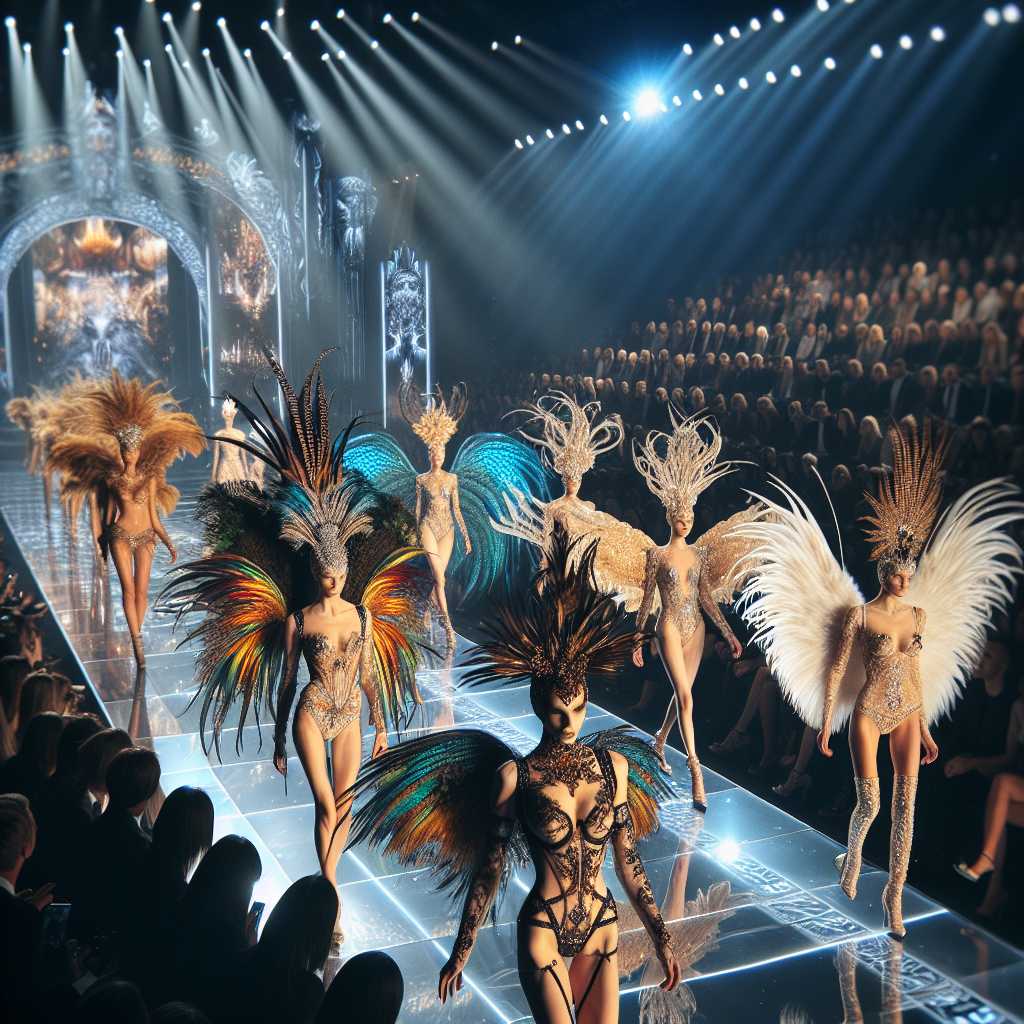The Legacy and Controversities of the Victoria’s Secret Fashion Show
The Victoria’s Secret Fashion Show was an annual event that combined fashion, music, and cultural spectacle into a televised performance spectacle that captured global attention. As one of the most anticipated and publicized fashion events in the industry, it featured high-profile models known as ‘Angels,’ adorned in elaborate lingerie ensembles often paired with theatrical wings, walking the runway as today’s popular music acts performed. However, the event has faced controversy and criticism that altered its course significantly over recent years.
Evolution and Influence of the Victoria’s Secret Fashion Show
The first Victoria’s Secret Fashion Show debuted at New York City’s Plaza Hotel in 1995 as a way to advertise the brand during the holiday season. It was relatively modest—not even recorded for television—compared to future shows. The event transformed in lockstep with evolving marketing strategies, turning the lingerie showcase into a yearly media event from the early 2000s onwards.
Victoria’s Secret used the show as a platform to promote its ‘Angel’ branding, linking their products to an ideal of feminine beauty personified by their chosen models who represented diverse countries but often met specific physical criteria. The annual show rapidly scaled up in luxury and opulence, featuring intricately designed costumes and notable names from the fashion industry.
Many have credited (or criticized) the Victoria’s Secret Fashion Show for reinventing brand promotion within the fashion realm. It provided an early example of how a fashion show could double as entertainment and marketing tool beyond the traditional runways of haute couture fashion weeks. The international broadcasting of the show propelled participating models to celebrity status, setting trends in beauty standards and popular culture.
Controversies Surrounding the Event
As early as its initial ascent to prominence, the Victoria’s Secret Fashion Show drew fire for its lack of inclusivity regarding body size and diversity. Critics pointed to its perpetuation of unrealistic beauty standards for women, contributing to body image issues among viewers who did not see themselves represented on its star-studded runway.
Moreover, despite its massive popularity and influence in shaping women’s undergarment trends and broader pop culture inclinations, allegations also surfaced concerning workplace cultures, with scrutiny intensifying in light of broader societal movements such as #MeToo. Reports of inappropriate conduct by executives towards models coupled with calls for increased corporate accountability precipitated reflection on the event’s values.
In another move toward diversification and inclusion across industries, Victoria’s Secret faced mounting pressure from consumers who urged inclusivity regarding race, body type (beyond traditional model-thin sizes), gender identity, and respect towards labor rights.
Cultural norms shifted as increasingly vocal advocates fought against narrow beauty ideals promoted by corporations, and many competing lingerie brands began offering more inclusive sizing ranges and representative marketing campaigns. These changes exerted additional pressure on Victoria’s Secret to adapt similarly.
The Hiatus and Potential for Revitalization
In 2019, Victoria’s Secret announced that it would be cancelling its yearly fashion show. Fresh perspectives toward inclusivity struck at the heart of VS’ traditional marketing approaches. Rampant criticisms called for an overhaul of not only the shown ideals of beauty but also examined environmental impacts derived from such a grandiose production.
With discussions centered around evolving marketing positions of intimate wear and societal demands for authentic representation, there is speculation about how or if such a show might return adapted for modern audiences. A considered revamp — should it materialize — would reflect changed perceptions in female empowerment, celebrating diversity in womanhood.
Notes
Image Description
A colorful image capturing models dressed in signature Victoria’s Secret lingerie complete with elaborate feathered wings walking down a brilliantly illuminated runway surrounded by an audience engrossed in the spectacle; noticeable are bright lights and stage designs typical of this iconic event.
